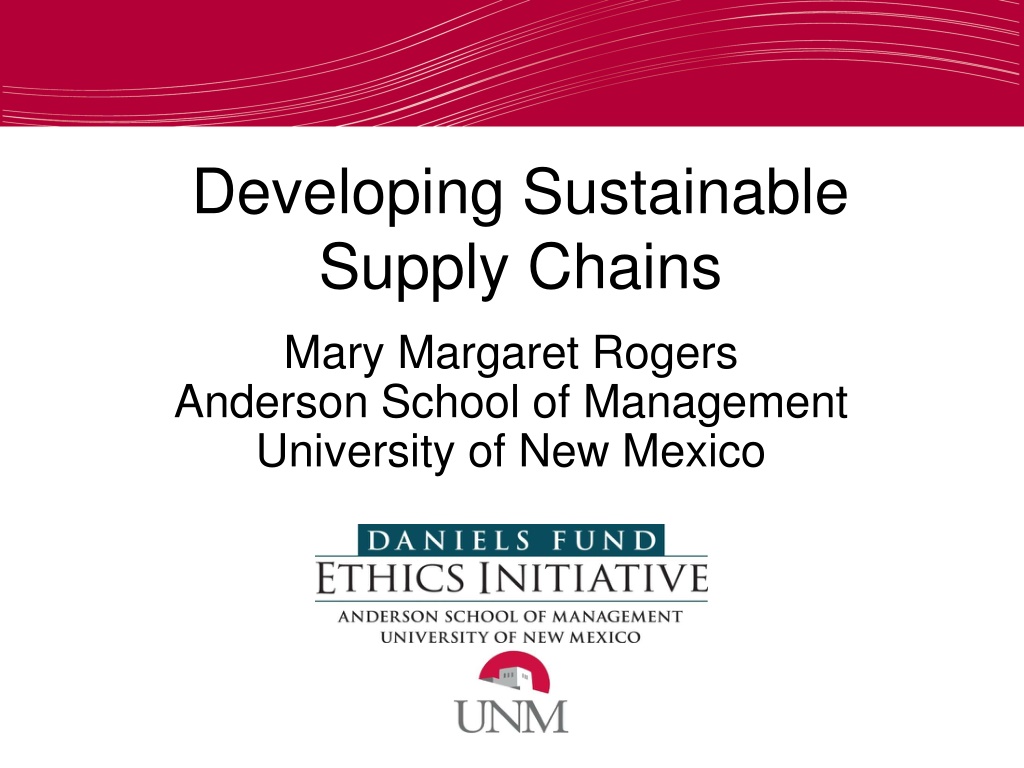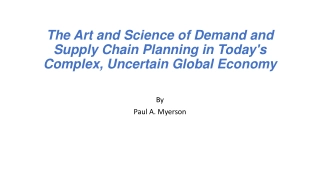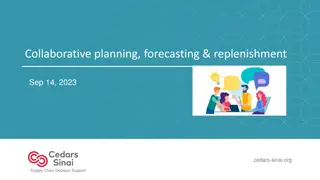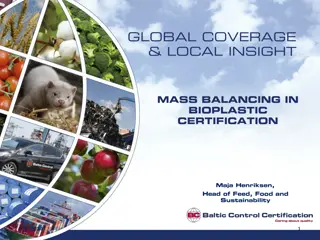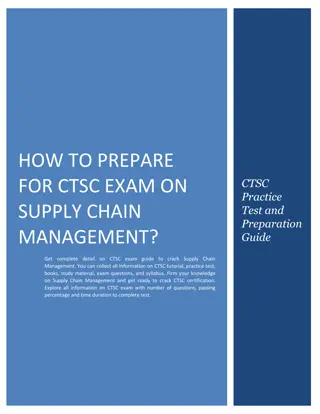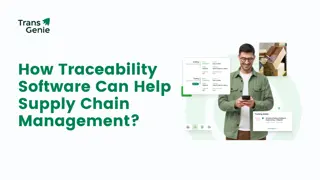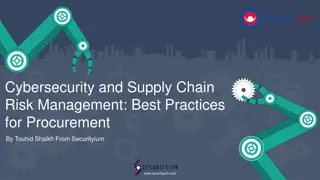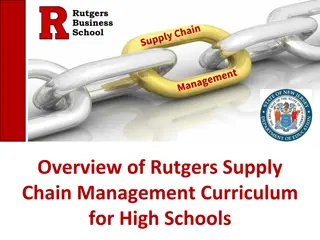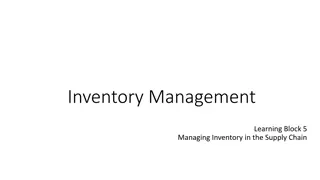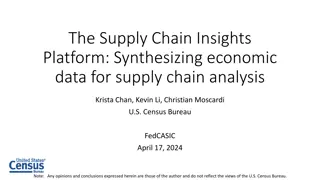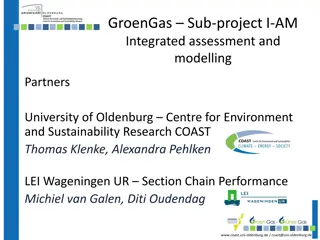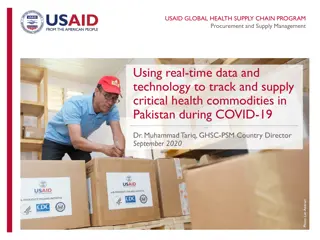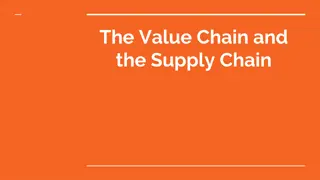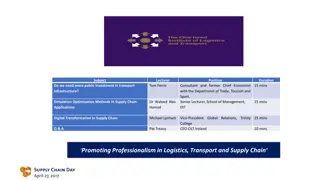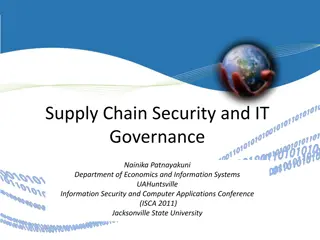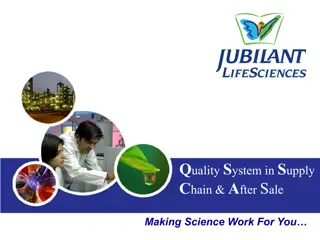Sustainability in Supply Chain Management: Key Considerations and Benefits
Sustainable supply chain management is crucial for meeting sustainability criteria while staying competitive and addressing customer needs. It encompasses activities from raw materials to end-users, impacting aspects like product design, recycling, risk management, and shareholder value. By promoting sustainability, companies can reduce costs, manage risks, enhance reputation, and reinforce shareholder value, creating a competitive advantage and promoting environmental and social responsibility.
Download Presentation

Please find below an Image/Link to download the presentation.
The content on the website is provided AS IS for your information and personal use only. It may not be sold, licensed, or shared on other websites without obtaining consent from the author. Download presentation by click this link. If you encounter any issues during the download, it is possible that the publisher has removed the file from their server.
E N D
Presentation Transcript
Developing Sustainable Supply Chains Mary Margaret Rogers Anderson School of Management University of New Mexico
Sustainability in Supply Chain Management Definitions: Supply chain management encompasses all activities associated with the flow and transformation of goods from the raw materials stage through the end user, as well as the associated information flows. (CSCPM) Sustainable supply chain management requires that sustainability criteria be met while maintaining competitiveness through meeting customer needs. (Seuring and M ller, 2008)
Why Should Supply Chains Try to Be Sustainable? Supply chains are boundary spanning Coordination across normal boundaries means that many aspects of sustainability may be affected From initial processing of RM to consumption by final customer
Why Should Supply Chains Try to Be Sustainable? Outsourcing Watchdog groups Government requirements
Why Should Supply Chains Try to Be Sustainable? Reduce cost and wastes Manage risks Create distinguishing (sellable) reputation Reinforce shareholder value
Issues affecting sustainability Product design Product returns Length of product life cycle Extension of product life cycle End of life disposal Packaging Source reduction Recycling Material substitution Waste disposal Refurbishing Repair Remanufacturing
Sustainability in Supply Chain Management Use of the triple bottom line Social Manage risks to organizational reputation Create competitive advantage Environmental Regulatory issues Risk of harm from usage, disposal, packaging, shipping Economic Sustainability can be cost efficient Sustainability can enhance shareholder value
The Triple Bottom Line Good? Social Performance Environmental Performance Sustainability Best Better Better Economic Performance Adapted from: Carter, CR, and DS Rogers. 2008. A framework of sustainable supply chain management: Moving toward new theory. International Journal of Physical Distribution & Logistics Management 38 (5):360-387.
Triple Bottom Line Supporting Factors Transparency and Risk Management Anticipate harm from activities Stakeholder Engagement Supplier Operations Organizational Culture Deeply Ingrained Organizational Citizenship Values and Ethics Strategy Sustainability as part of an integrated strategy
Sustainable Supply Chains at Walmart November 1, 2006 Walmart introduced its Sustainable Packaging Scorecard Goal: Reduce packaging in supply chain by 5% by 2013 Predicted Results (Walmart U.S. only): 667,000 metric tons of CO2 not emitted 213,000 trucks off the road annually 66.7 million gallons of diesel fuel saved
Sustainable Supply Chains at Walmart The 7 R s of Sustainable Packaging Remove Reduce Reuse Renew Recycle Revenue Read
Sustainable Supply Chains at Walmart When Wal-Mart tells a supplier that it wants a change in packaging, that supplier will change all its packaging Wal-Mart has the potential to have a tremendous impact on America s environmental footprint. David Willett, spokesman for The Sierra Club
Sustainable Supply Chains at Walmart July 16, 2009: Walmart announced it would develop a Sustainability Index. Step 1: Supplier Assessment Step 2: Life cycle Analysis Database Step 3: Tool for Consumer
Sustainable Supply Chains at Walmart February 25, 2010: Walmart announced plans to eliminate 20 million metric tons of greenhouse gas emissions from the global supply chain by the end of 2015. Goal: Reduce energy use and cost for suppliers, Walmart, and customers.
Reverse Supply Chains A reverse supply chain is a means of enhancing sustainability by retrieving products from customers. Safe end-of-life disposal Refurbishing Reuse for spare parts Value in recycling
Whats different about reverse supply chains? Forward Supply Chain Reverse Supply Chain Planning: Forecasts Location: One to many transportation Costs: Well-defined Focus on product ordering costs Visibility High priority Planning: Reactive Location: Many to one transportation Costs: Not easily defined Additional costs not easily justified Visibility Low priority
Benefits of Reverse Supply Chains Economic Maintain product value reuse Continuous improvement Ethical Customer safety Customer satisfaction Environmental Protect and safeguard sustainability Legal Global rules and regulations (WEEE Act)
Reverse Supply Chain Challenges Operational Information and process flow Roles Product Financial Costs Technological Information technology systems
